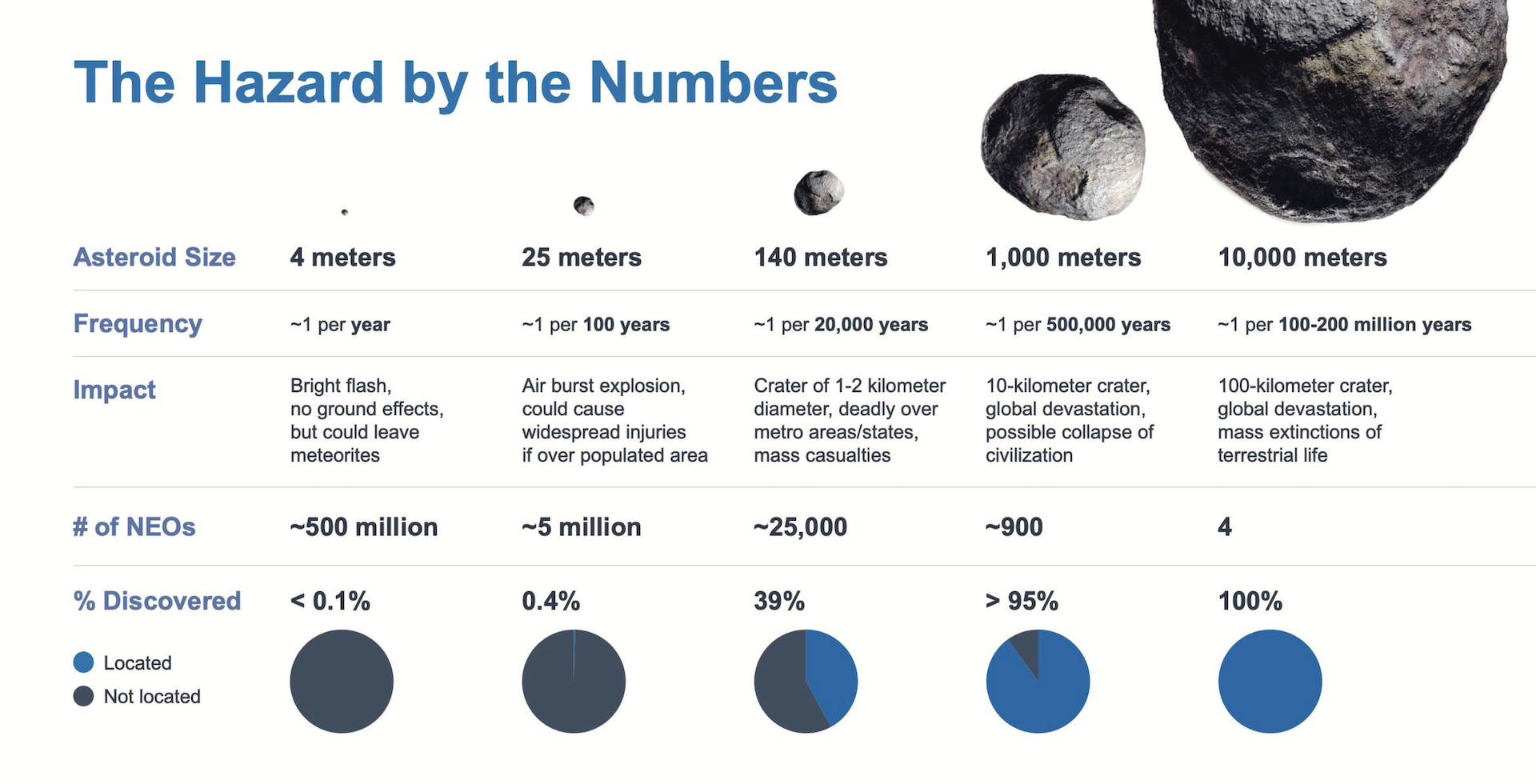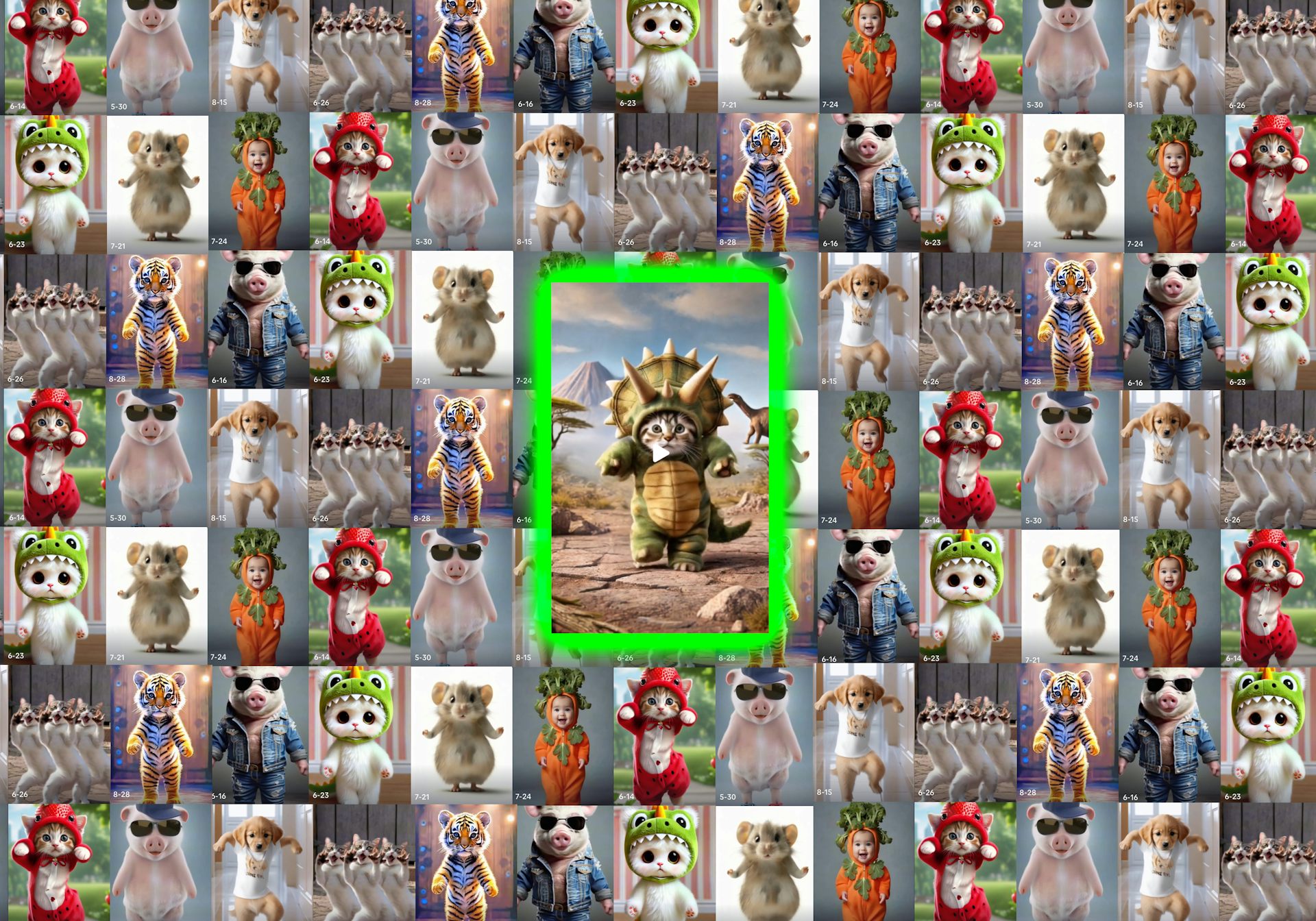Asteroids are remnants of the formation of our Solar System and there are approximately half a billion asteroids larger than four meters in diameter orbiting the Sun. They travel through the Solar System at speeds similar to Earth, up to 30 kilometers per second.
Asteroids have captured the public’s imagination, often due to Hollywood movies depicting their potential for destruction if a large one were to hit Earth. Media headlines frequently describe asteroids in terms of their size, comparing them to objects like buses, trucks, vending machines, or even giraffes. Some headlines even use terms like “city killer,” “planet killer,” or “God of Chaos” to emphasize the potential threat.
While the threats posed by asteroids are real, it is important to understand the actual risks involved. Small asteroids are much more common than large ones and cause less damage. Earth frequently experiences low-impact collisions with small asteroids, while high-impact collisions with large asteroids are rare. Most small asteroids break up in Earth’s atmosphere and do not reach the surface.
When a small asteroid or meteoroid enters Earth’s atmosphere, it creates a spectacular fireball, similar to a shooting star or meteor. If any fragments survive and reach the ground, they are called meteorites. However, the majority of the object burns up in the atmosphere.
In terms of asteroids passing close to Earth, a simplified calculation can provide an estimate. For example, a four-meter asteroid intersects Earth’s surface approximately once per year. By doubling the surface area, you can expect two such asteroids to come within 2,600 kilometers of Earth’s surface each year. This aligns with recent records of close approaches.
While a few thousand kilometers may seem like a significant distance for small objects, most of the asteroids covered in the media pass at much larger distances. Astronomers consider anything closer than the Moon (approximately 300,000 kilometers) to be a close approach. In 2022, there were 126 close approaches, and in 2023, there have been 50 so far.
When it comes to larger asteroids, those bigger than one kilometer in diameter, the same logic applies. For every impact that could threaten civilization, occurring once every half a million years, there could be thousands of near misses within the same time frame. An example of a close approach will occur in 2029 when asteroid 153814 (2001 WN5) passes 248,700 kilometers from Earth.
To assess threats from asteroids, astronomers continuously search the skies for new objects. Approximately 95% of asteroids larger than one kilometer have already been discovered, and efforts are ongoing to find the remaining 5%. When a new asteroid is found, extensive observations are conducted to evaluate any potential threat to Earth. The Torino Scale is used to categorize predicted threats up to 100 years into the future, ranging from 0 (no hazard) to 10 (certain collision with a large object). Currently, all known objects have a rating of zero, and no object has received a rating higher than 4 (a close encounter requiring attention from astronomers).
In terms of addressing potential threats, technology has advanced to the point where we have the capability to take action if faced with a significant threat. The recent DART mission successfully collided a spacecraft into an asteroid, altering its trajectory. In the future, with enough advance notice, such actions could help protect Earth from a collision.
In conclusion, while asteroids do pose real threats, it is important to understand the actual risks involved. Media headlines often exaggerate the potential danger, but by assessing the size and proximity of asteroids, scientists can provide a more accurate understanding of the risks. Ongoing efforts to discover and monitor asteroids allow for better assessment and potential mitigation strategies if needed.


